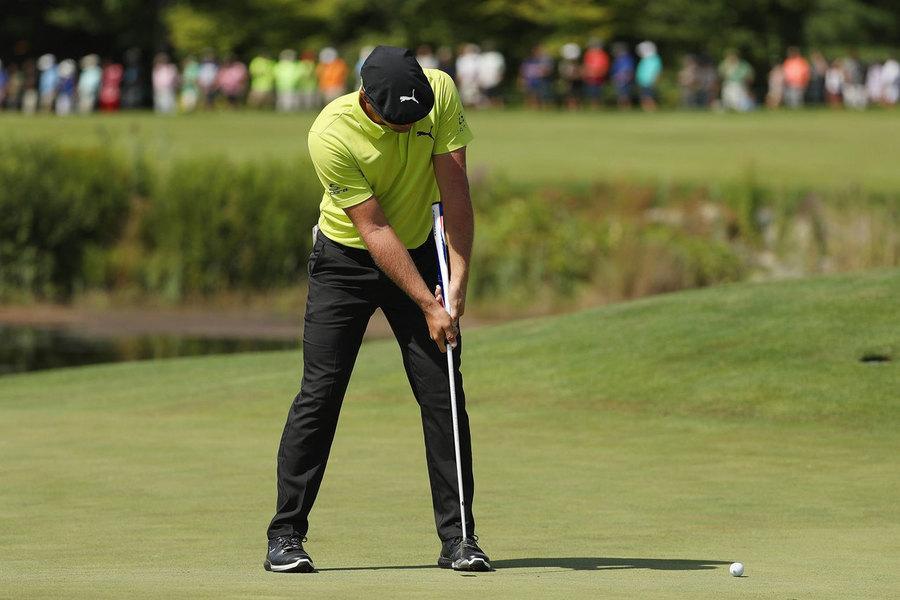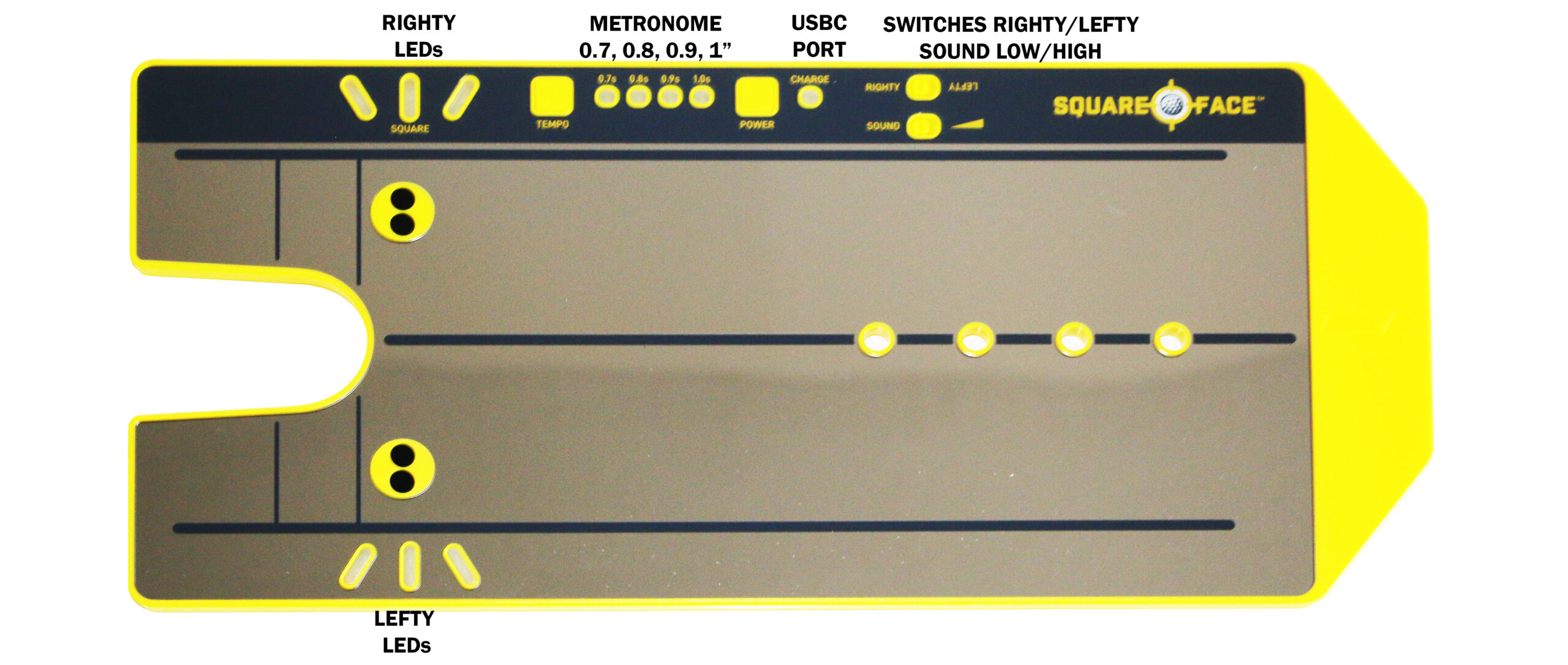The Arm-Lock Putting Grip: 3 Things to Master before Giving it a go
The Arm-Lock Putting Grip: For some, the traditional putting grip, with its reliance on hand and wrist action, feels more like a frustrating tango. Enter the arm-lock putting grip, a technique gaining traction on the tours and in local clubhouses alike. But is this unorthodox method a putting panacea, or just another fad in the ever-evolving world of golf equipment?
Dissecting the Lock: Mechanics and Benefits
The arm-lock grip throws a wrench (or, more appropriately, a putter) into the traditional putting setup. Instead of the familiar two-handed hold, the dominant hand (usually the right hand for righties) slides lower down an extended grip, often featuring a flat profile. This hand then locks the grip against the inner forearm, creating a stable connection between your arm and the putter.
The magic of the arm-lock lies in its ability to minimize wrist movement during the stroke. This, in theory, leads to several benefits:
- Enhanced Stability: By anchoring the putter to your arm, you essentially eliminate the “yips” and unwanted wrist action that can plague many golfers.
- Improved Distance Control: With the hands locked in place, you rely more on your larger shoulder muscles for power, leading to a more repeatable and controlled putting stroke, especially on those crucial birdie putts.
- Face Angle Retention: Minimized wrist action translates to better face control through impact, ensuring the putter delivers the ball squarely and reduces skid or excessive launch.
Addressing the Lock: Setup and Considerations
While the arm-lock grip promises a more consistent stroke, mastering it demands a shift in your putting posture. Here’s a breakdown of the setup:
- Grip It and Lock It: Invest in an extended grip designed for arm-locking. Slide your dominant hand lower on the grip, allowing the top of the grip to press firmly into your leading forearm.
- Posture Perfect: The arm-lock necessitates a more bent-over posture compared to the traditional method. Ensure your spine angles slightly forward, with your weight more distributed towards your lead foot.
- Shaft Lean: Due to the locking mechanism, the putter shaft will naturally lean forward at address. This might require a putter with a higher loft (around 6-8 degrees) to avoid digging the face into the ground at impact.
Unlocking the Potential: Is the Arm-Lock Right for You?
The arm-lock grip isn’t a magic bullet for putting woes. Here are some factors to consider before taking the plunge:
- Putting Woes vs. Putting Style: If you’re a chronic struggler with inconsistent putting, the arm-lock could be a game-changer. However, if you’re already a decent putter with a reliable stroke, the adjustment might not yield significant improvement.
- Biomechanical Compatibility: The bent-over posture required for the arm-lock may not suit everyone, especially golfers with pre-existing back issues.
- Practice Makes Perfect: Transitioning to the arm-lock grip requires dedicated practice to develop a smooth and repeatable stroke. Don’t expect instant results; be patient and commit to honing your new putting technique.
Locking Horns with the Rules: Legality and Etiquette
The arm-lock grip is legal under the Rules of Golf, as long as several key points are adhered to:
- No Anchor: Your non-dominant hand cannot be used to hold the putter against your forearm. The locking sensation comes solely from the grip pressing into your arm.
- Shaft Angle Limits: The putter shaft angle at address cannot be more than 45 degrees relative to your forearm.
While legal, the arm-lock grip can raise eyebrows amongst traditionalists. Always be mindful of course etiquette and ensure your putting routine isn’t overly time-consuming.
Locking Up the Blog: Final Thoughts
The arm-lock putting grip offers a compelling alternative for golfers seeking more consistency and stability on the greens. However, it’s not a universal solution, and requires careful consideration and dedicated practice. If you’re intrigued by the potential benefits, consult your local PGA professional for a fitting and guidance to see if the arm-lock can unlock a new level of putting prowess in your game. Remember, feel and personal preference are paramount. So, experiment, have fun, and see if the arm-lock grip can help you sink more putts and lower your scores.


The Square Face And Putt Like A Pro Book
Click here for 10% off the Square Face (use coupon code SUPERIORGOLF) and my eBook free with the purchase of the Square Face
